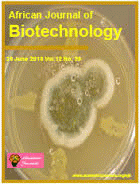Various approaches have been developed to define conservation units for plant and animal species. In this study, we combined nuclear microsatellites (from a previous published study) and chloroplast microsatellites (assessed in the present study), leaf and seed morphology traits and abiotic variables (climate and soil) to define evolutionary significant units (ESU) of Santalum austrocaledonicum, a tree species growing in New Caledonia. Results for chloroplast microsatellites showed that the total population heterozygosity was high, (Hcp=0.84) but varied between islands. Differentiation was strong in the total population (Fstcp=0.66) but also within the main island Grande Terre (Fstcp=0.73) and within Iles Loyauté (Fstcp=0.52), highlighting a limited gene flow between populations. These results confirmed those obtained with nuclear microsatellites. The cluster analysis on molecular markers discriminated two main groups constituted by the populations of Grande Terre and the populations of Iles Loyauté. A principal component analysis of leaf and seed morphology traits singled out the populations of Iles Loyauté and the western populations of Grande Terre. Quantitative genetic analyses showed that the variation between populations was under genetic control (broad sense heritability close to 80%). A high correlation between rainfall and morphological traits suggested an impact of climate on this variation. The integration of these results allows to define two ESUs, one corresponding to Grande Terre and Ile des Pins and the other the Iles Loyauté archipelago. This study stresses the need to restore some populations of Grande Terre that are currently threatened by their small size.
DOI:
https://doi.org/10.1007/s10592-006-9152-7
Altmetric score:
Dimensions Citation Count:

Publication year
2007
Authors
Bottin, L.; Tassin, J.; Nasi, R.; Bouvet, J.-M.
Language
English
Keywords
santalum austrocaledonicum, microsatellites, chloroplasts, morphology, traits, evolution, genetic diversity
Geographic
New Caledonia























